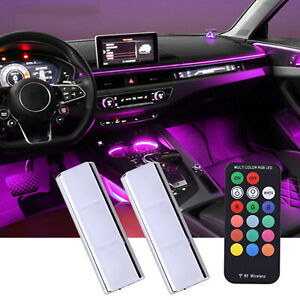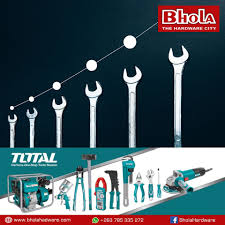
Weird cars come in all shapes and sizes, some look like award-winning designs and some are poorly-designed abominations. The ugliest cars were the Pontiac Aztek and the Amphicar. These cars are not practical but they stand out because of their looks. If you've ever wondered what made these cars so unique, you've come to the right place. You'll find out the strangest cars ever made in this article.
Toyota Sera is an odd car
The Toyota Sera, a bizarre car with many interesting design features, is the Toyota Sera. It has a rear hatch that is glassy and connects to the roof and doors. Although it has a light and airy feel, the dome can become hot in the Malaysian sun. To solve this problem, the Sera has removable interior roofing panels. Despite its bizarre design, this car is unique in its class.
Volkswagen Type 181 is a weird car
The Volkswagen Type 181 car is unusual. It was made originally from parts of many different vehicles, including VWs. It was designed as a temporary fix, a European version of the Jeep. Its flat-four engine and floorpans were derived from the Type 1 and the Karmann Ghia. It was also based off the Type 82 Kubelwagen.
Pontiac Aztek's car is one of most disgusting ever created
The Pontiac Aztek is one of the most ugly cars ever built. The ugly design of the car is legendary for its two-tier front fascias. The car is a disaster. It was designed by Tom Peters who also wrote the C7 Corvette. Although the car was not produced in large numbers, its role in Breaking Bad has earned it some fame.

Amphicar could be described as both a vehicle and a vessel.
The Amphicar was an hybrid vehicle that was part boat and car. It was made in sixties. It was not commercially successful and only around four thousand were manufactured. Its design took its cues from the Volkswagen Schwimmwagen, which became popular during WWII. It featured a sleek finback, twin propellers and a chrome docking connector on the hood.
Bond Bug is a small van
In 1966, the Bond Bug's first production model was revealed. It was also known as the "Bond Bullet". The Bond Bug's distinctive body design was made from a steel chassis and fibreglass. It had a roof that swung forward, making it easier to get inside and out. It was available as a two-door or three-door model. The unique driving characteristics and quirky appearance of this minivan have been sought after by collectors. A French-registered Bond Bug 150-horsepower is valued between EUR20,000-30,000.
Peel P50 is a beetle
Peel P50 was a Volkswagen Beetle originally manufactured by the Isle of Man auto manufacturer. It was a popular model, but a new company started by Gary Hillman and Faizal Khan has reintroduced the beetle in both electric and petrol versions. The P50 is no exception. Many people are keen to set world records. There are four main classes of cars: fastest, most powerful, fastest quarter-mile, and most expensive.
Scarab is a beetle
Knowing how to recognize scarab beetles will help you determine if your lawn is being infested. Although scarab beetle larvae can be difficult to spot, there are many ways you can prevent them from damaging your lawn. Yates Grub Kill and Protec provides protection against larvae for six months.
X90 stands for a boat
The X-90, a boat of mid-range range, is available. The vessel was loosely inspired by the 88, but it was completely redesigned from scratch. This boat is the first to bear the suffix Ocean.

Amphicar can be described as a boat
Trippel designed the Amphicar, a boat that was built in the 1960s. It was 15.5 feet tall and weighed 1,700lbs. It could travel 90 miles an hour on land, but it could do better in water. They were secured by a handle, and could only be opened when in water. Today, there are eight remaining Amphicars that live at Disney Springs. You'll need to spend a lot of money to buy one of these boats, even though some of them have low mileage.
Nissan Cube is an automobile
There's one reason that the Nissan Cube is so popular in California. Exterior design features include large glass areas, a bullfrog grille and a water drop headliner. The interior features a cushioned "sofa" and shag carpet insert. The Cube's surprisingly large trunk offers plenty of storage space. You will also be happy to learn that it has an iPod jack.
FAQ
What qualifications do you need to be a truck-mechanic?
Although you don't need to have any formal qualifications, your experience working with trucks and engines is invaluable. Your knowledge is valuable as you are able to quickly diagnose problems and work efficiently.
A solid understanding of diesel technology is also a plus. This will help you understand the components that are needed to fix our vehicles.
How long does an apprenticeship in automotive mechanics last?
A three-year apprenticeship in automotive mechanics takes. This includes two years at school and two years working as an apprentice. The first year is spent learning all aspects of the trade, including theory, practical skills, and safety procedures. This year, you will also learn how to safely and efficiently use tools. After the first year, a second year will be spent on-thejob training. This year you'll get experience in different trades. These periods will also give you the chance to take formal courses.
The final year of this program is spent in obtaining qualifications and becoming certified in your field. These include NVQs or National Vocational Qualifications. These are earned after passing exams that cover specific topics in the industry. Additionally, HNCs are Higher National Certificates that cover general subjects such management, customer service, and business administration. City & Guilds certificates can be obtained for individuals who want to learn certain trades.
Is being an auto mechanic a promising career choice?
There are many exciting opportunities in the automotive industry for people who are driven to achieve excellence. The best way to succeed in this field is by working hard and learning as much as possible from others.
Communication skills are important as customers and coworkers will often be your main focus. You must also be willing and able to travel long distances, which can make it difficult to commute.
Consider taking classes at local universities or community colleges if your goal is to pursue a career in the automotive industry. Many schools offer programs specifically designed for students interested in auto repair, sales, or customer service.
If you decide to pursue a degree, you should study mechanical engineering. You can get your bachelor's degree in as little as four years.
Many companies will hire students straight out of college. You should start looking for employment as soon as you are able to continue your studies part-time.
Once you've completed your education, you'll probably need to complete some form of training before being able to take up a position as an automotive technician.
You will need to pass the Automotive Service Excellence certification exam. This test covers topics like engine maintenance, brakes system, suspension, and many other subjects.
Once you have passed the ASE Test, you are eligible to apply for a National Institute for Automotive Service Excellence License.
You can repair vehicles owned by private citizens with a license. You'll be paid based upon the number of services provided.
It's important to note that not all states require licensing. However, licensing is required for anyone who plans to work outside the home state.
Some states don’t issue licenses until a certain amount has been completed. This may be the case for you.
Statistics
- According to the BLS, total auto technician employment is expected to exceed 705,000 by 2030. (uti.edu)
- 52% of Mechanics in the United States think their salaries are enough for the cost of living in their area. (indeed.com)
- The U.S. Bureau of Labor Statistics (BLS) reports that the job outlook for automotive service technicians and mechanics is expected to decline by 4% from 2019 to 2029. (indeed.com)
External Links
How To
How to correctly diagnose your vehicle for repairs
First, look at the symptoms of your car to determine if it needs repair. Follow these steps to properly diagnose your vehicle.
-
Check engine lights. Check the dashboard light indicators such as the engine light indicator, the oil pressure gauge, the battery light indicator, the coolant temperature gauge, and the RPM gauge. If any of them have been flashing for several days, it may mean something is wrong with your vehicle.
-
Inspect the tire treads. Tire wear can lead to problems in handling and brake performance. It is also important to inspect the wheel treads. They should be smooth and clean. This can be done by removing the wheels from the vehicle and taking them off. You can check the tread wear with a flashlight.
-
You should always monitor the level brake fluid. Keep track of the brake fluid level in your vehicle. This ensures that your brakes work properly. Your brakes may fail if the brake fluid level drops.
-
Test the suspension system. It is common for vehicles to have a suspension system which absorbs shocks or vibrations. It gives you better control and allows for smoother accelerations and decelerations. A suspension problem can cause your vehicle to feel wobbly and shake uncontrollably. To test whether your vehicle has a suspension issue, try putting weight on the front or rear axle and observe the movement.
-
Examine your steering column. Steering columns connect the steering wheels to other parts of the vehicle. Sometimes, steering columns are damaged by accidents. Replace it if your steering column feels loose or unsteady.
-
Observe the exhaust pipes. The exhaust pipes are responsible for moving gases from the combustion chamber into the atmosphere. If the exhaust pipe is damaged or leaks, harmful fumes can enter your cabin. It is also important to repair any bends in your tailpipe immediately.
-
Take a look under your hood. Check under your hood for any unusual or missing components. You could have fluids leaking from the engine. In addition, if you notice an unusual smell coming from your engine compartment, you should contact a professional technician.
-
It is important to inspect the air filter. Your vehicle's air filter collects dust and debris from the outside environment. Your vehicle will run less well if it has a dirty filter. Replace your air filter regularly.
-
Verify the fan belt. Your vehicle's fanbel is what connects the engine and the transmission. The engine will not turn if the fan belt breaks. It's easy to replace the belt. All you need to replace the belt is a screwdriver with pliers.
-
Make sure you inspect the radiator hoses and hoses. The radiator-hose carries water to the engine. If it becomes cracked or damaged, it can leak hot liquid onto the engine. You only need a pair of needle-nose pliers and a small wire brush to repair the hose.
-
The windshield wipers should be checked. Windshield wipers use electricity to clean away snow and rain. If they stop working, streaks could be left on your glass. Simply change the washer oil to fix the problem.
-
Verify the condition of your battery cables. Batteries provide power to electrical systems inside your car. Make sure you disconnect the negative cable before replacing batteries. Failure to do so can damage your alternator.
-
Pay attention to your headlights. Headlights illuminate the road ahead of you. It can lead to poor visibility if they aren't working properly. Inspect the bulbs for signs of burnt out.
-
Be sure to check the lights. You can warn other drivers if you approach them at night. You may be distracted by the light and end up in an accident.
-
You should inspect your brakes. Brakes will reduce the speed of your car in case of an accident. If they aren't working correctly, you could lose control of your car and crash.
-
Change the oil. Your engine will stay lubricated by the oil. It prevents metal parts from rusting too quickly. Changing the oil every month is recommended.